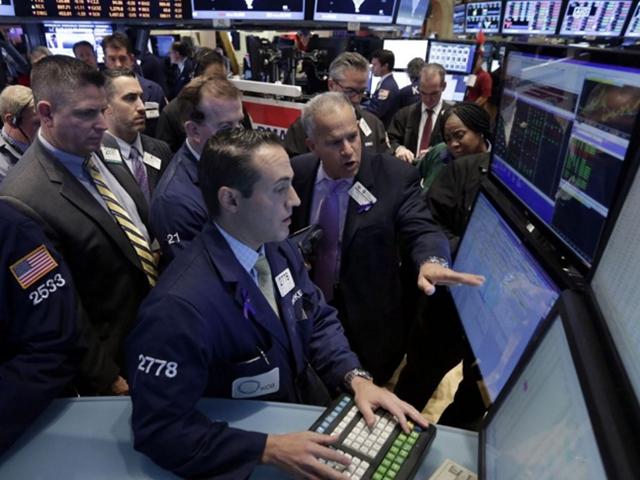
On June 11, 2025, according to The Wall Street Journal, the US stock market showed a volatile trend in the latest trading day, with the S&P 500 index approaching its historical high. On the surface, this reflects a recovery in market sentiment, but from a financial perspective, behind the current rally lies structural risks and systemic vulnerability.
Firstly, the rise of the S&P 500 was mainly driven by the technology sector, especially the valuations of artificial intelligence concept stocks and large technology enterprises. The market capitalization expansion of a few companies has driven the overall index, but it is significantly disconnected from the profit situation of a wide range of enterprises. Most small and medium-sized enterprises are still constrained by high financing costs, weak demand and disrupted supply chains. This structural differentiation means that the current rise is difficult to reflect the general recovery of the real economy and also makes the market more vulnerable to the impact of local adjustments.
Secondly, the market is extremely sensitive to changes in interest rates. Although the Federal Reserve has not yet clearly defined the path for interest rate cuts, the market quickly bet on a rate cut in September simply because the CPI in May was slightly lower than expected, reflecting investors' lack of confidence in the fundamentals and their reliance on policy support instead. This excessive reliance on monetary policy has weakened the stability and pricing power of the market. Once the expectation of interest rate cuts fails, it may lead to a significant correction in asset prices and a rapid contraction in liquidity, creating a systemic disturbance.
At the valuation level, the current price-earnings ratio of the S&P 500 is close to a ten-year high, while earnings growth has not matched it. The enterprise maintained the growth of earnings per share through share repurchases and adjusting the data of financial statements, but the actual growth of revenue slowed down. This superficial prosperity masks the decline in profit quality. Once encountering economic or policy headwinds, the pressure of valuation correction will emerge rapidly.
At the macroeconomic level, the growth of consumption in the United States has shown signs of fatigue, and the manufacturing industry is still in the contraction zone. Although the employment data seems stable, most of the new jobs are in low-wage service categories, and the growth of real wages has been eroded by inflation. Against the backdrop of insufficient endogenous growth momentum, the rise in the financial market seems more like the result of capital accumulation, with the real economy failing to provide sufficient support.
At the market behavior level, investors' tolerance for financial reports has been continuously declining. As long as a company's financial report is "slightly better than expected", it is regarded as positive news, and it no longer pays attention to the actual improvement of performance. This kind of "expectation game" that deviates from the fundamentals weakens the rational judgment of the market on the value of enterprises and also reduces the efficiency of resource allocation in the capital market.
From the perspective of capital structure, the rally of the US stock market has been driven by ETFs and quantitative funds. This type of passive funds intensifies the market's pro-cyclical fluctuations. Once the market reverses, funds may quickly withdraw, triggering a "stampede-like" decline. Meanwhile, the leveraged positions magnified through options and derivatives also make the market more prone to chain reactions during fluctuations.
At the level of financial regulation, there is still a lack of forward-looking control over key links such as block trading and the leverage level of hedge funds at present. Under the background of high valuation and high leverage, once some assets are revalued, the transmission path of systemic shock will become shorter and faster. However, the regulation has not yet established a powerful buffer mechanism, and this lag further amplifies the potential risks.
Furthermore, external risks are continuously accumulating. Geopolitical tensions, fluctuations in US bond yields, the reshaping of the global industrial chain and exchange rate fluctuations, etc., may all become external triggers for adjustments in the financial market. Especially against the backdrop of a high US fiscal deficit and rising pressure to refinance US debt, the space for fiscal and monetary policies is increasingly limited, making market confidence more vulnerable to disturbance.
To sum up, although the S&P 500 index is close to its historical high, the foundation for its rise is not solid. The financial market presented a false prosperity under the combined effect of high valuations, policy dependence and the accumulation of liquidity. Once policy expectations fail or the fundamentals deteriorate, the adjustment may come more sharply and urgently. Investors should not be complacent about the impact brought by potential structural imbalances.

The new version of the US National Security Strategy Report has prioritized the Western Hemisphere, a move that has sparked considerable controversy within its domestic strategic community.
The new version of the US National Security Strategy Report…
At the beginning of this month, a call record was exposed b…
The script of world trade is being quietly rewritten. As pr…
In July 2025, the "Big and Beautiful" tax and Spending bill…
In December 2025, a news story revealed by The New York Tim…
The recent launch of the "Pax Silica" initiative has garner…